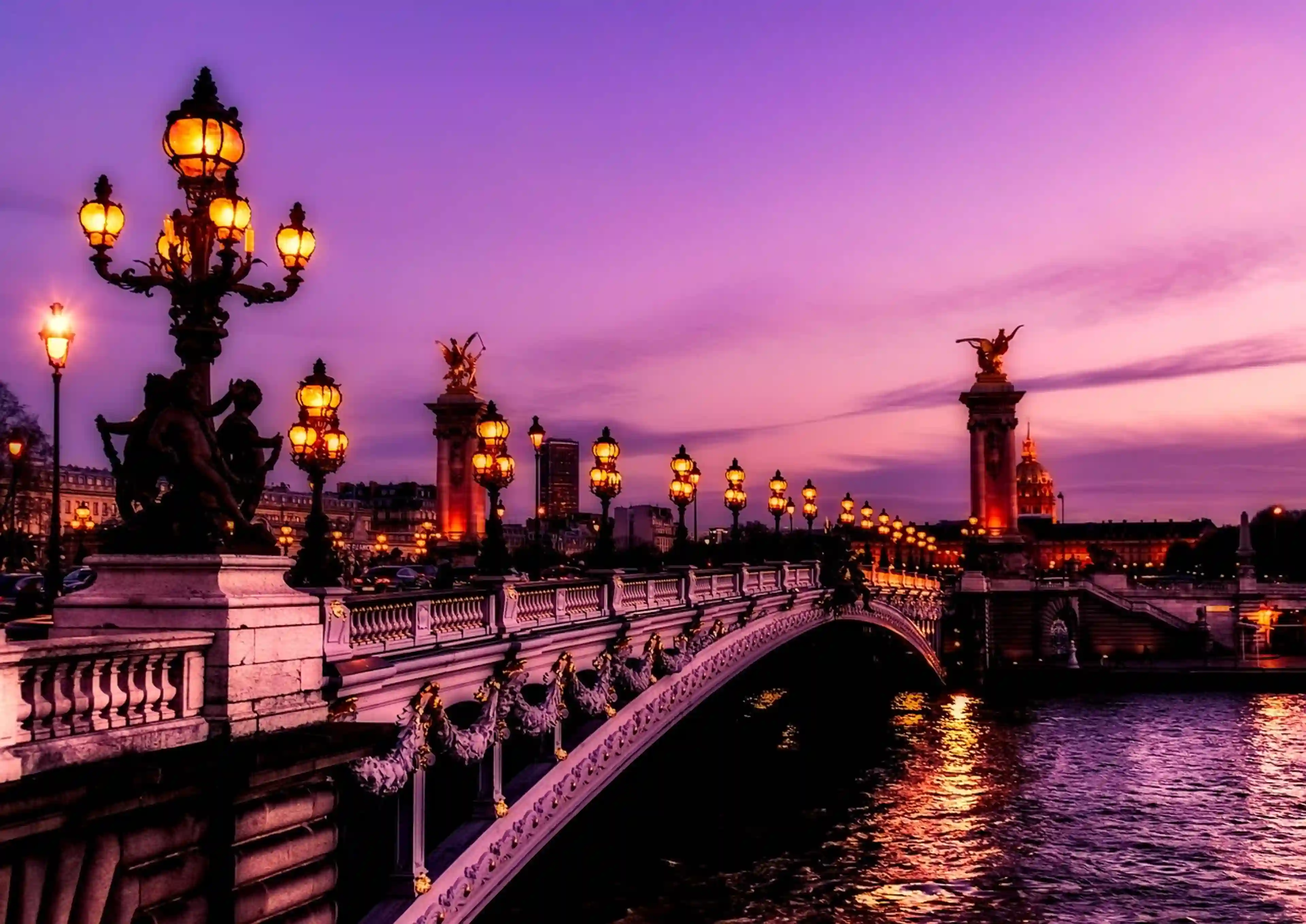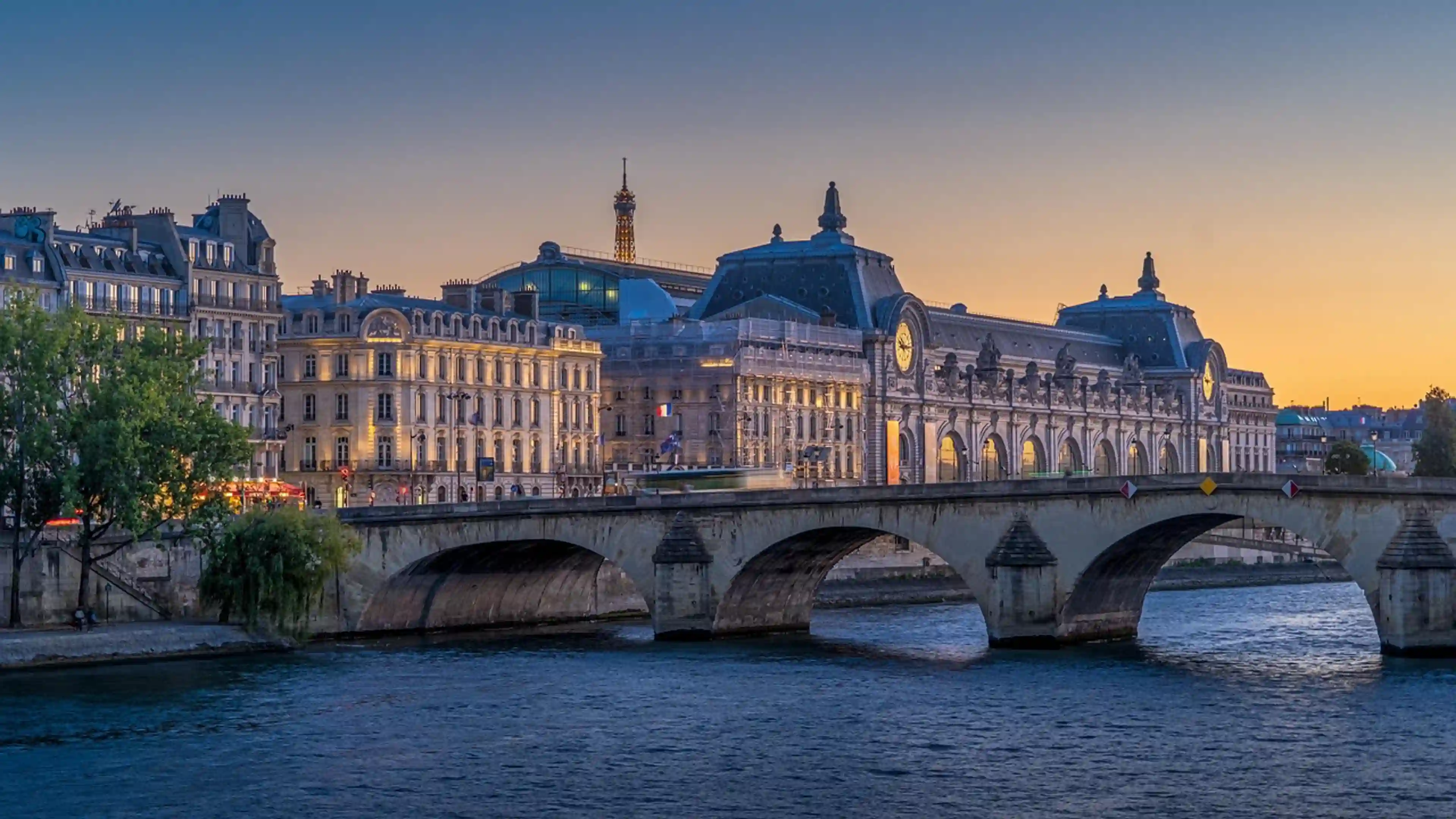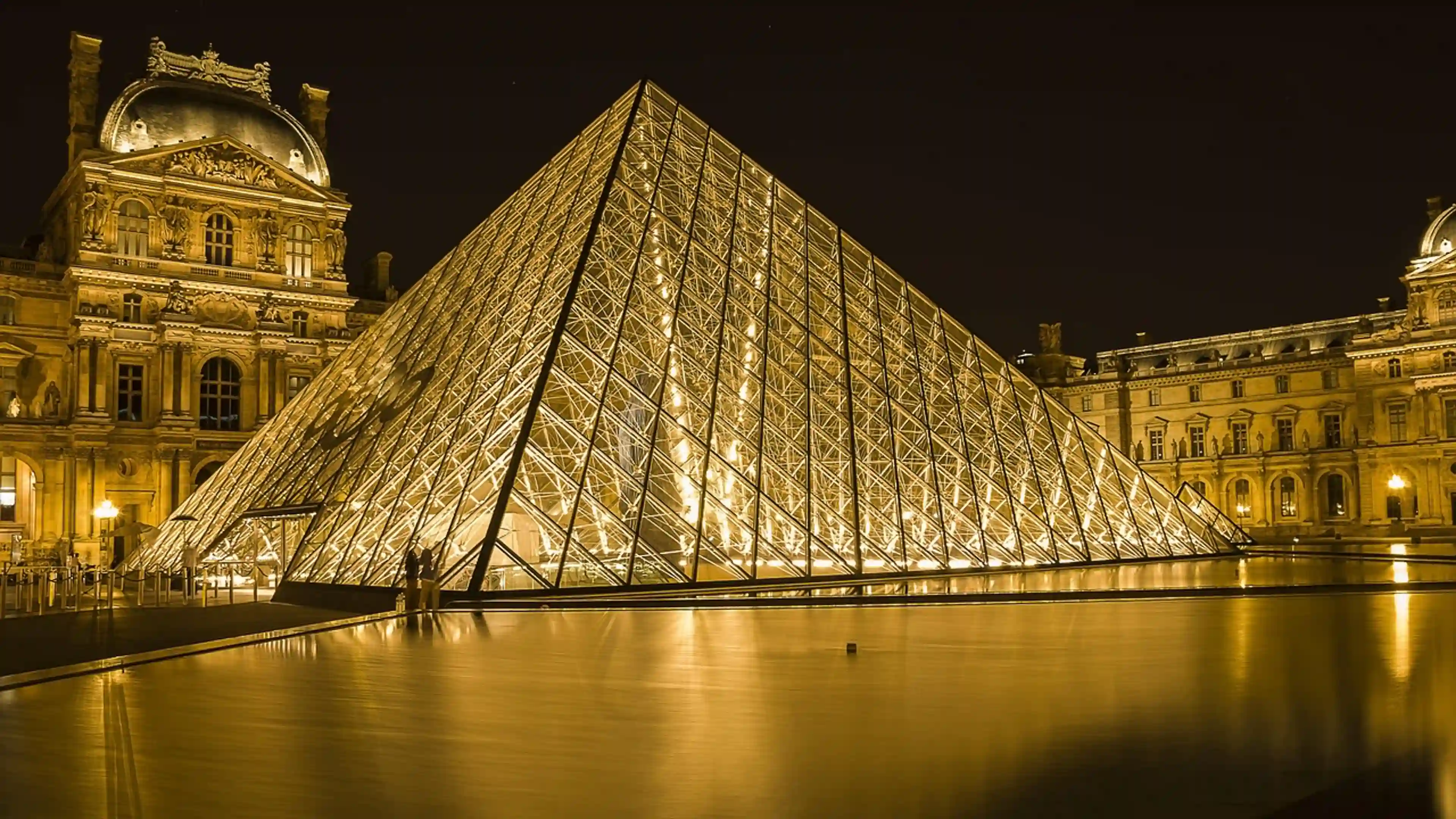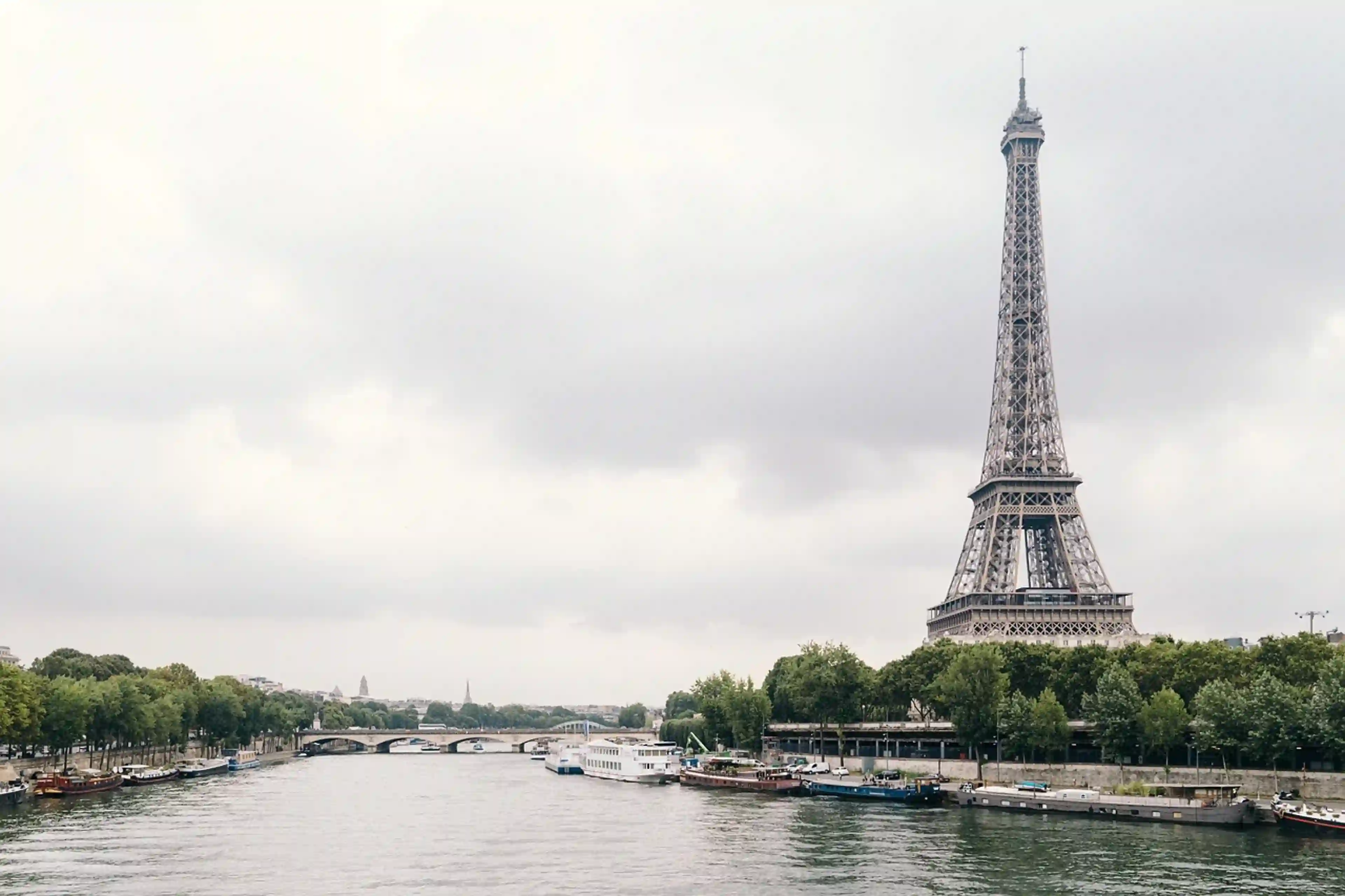Paris
General presentation
Top 50
History, culture & traditions
Travel advice
Wikipedia
Viator activities
Tiqets activities
Global presentation
Capital of France, Paris is an iconic metropolis recognized for its rich historical heritage, vibrant culture, and global influence. Nicknamed the "City of Light," it attracts millions of visitors each year who come to admire its iconic monuments, world-renowned museums, and discover its unique way of life. The city stands out for its exceptional architecture, incomparable cultural heritage, and its status as a reference in various fields such as fashion, gastronomy, and the arts.
Geographical situation
Nestled in the center-north of France, Paris stretches across a wide meander of the Seine, in the heart of the Paris Basin. The city's topography is relatively flat, with an average elevation of about 35 meters. Notable reliefs such as the Montmartre hill (96 m) and Belleville (128 m) offer exceptional panoramic views of the capital. The natural islands of the Seine, particularly the Île de la Cité, are the historical cradle of the city and mark its geographical and historical center.
Atmosphere and character
Paris is distinguished by its romantic atmosphere and incomparable cultural vibrancy. Its lively neighborhoods, picturesque cafés, and elegant boulevards create a unique ambiance where tradition and modernity coexist harmoniously. The intense cultural life, bustling public spaces, and peaceful gardens offer a multitude of contrasting experiences. As a cosmopolitan center par excellence, the French capital hosts a rich diversity of cultures and languages, contributing to its dynamism and international character while preserving its unique identity.
Climate
The French capital enjoys a degraded oceanic climate, characterized by relatively mild winters and moderately warm summers. Average temperatures range from 3°C in winter to 25°C in summer. Precipitation is distributed quite evenly throughout the year, with an average annual total of about 637 mm. Snowfall remains rare and generally fleeting, while summers may occasionally experience more intense heat periods.
Best season to visit
To fully enjoy Paris, prefer the period from spring to autumn (April to October). During these months, the climate is generally pleasant, providing mild temperatures and often sunny days. Spring enchants with its blossoming parks and vibrant gardens, while autumn charms with its warm hues and more serene atmosphere. Summer, although marked by increased tourist traffic, allows for full enjoyment of outdoor activities and the numerous Parisian terraces.
Access
Paris is served by two major international airports: Roissy-Charles-de-Gaulle to the north and Orly to the south, which accommodate flights from around the world. The city also constitutes an important railway hub, with six main train stations (Nord, Est, Lyon, Austerlitz, Montparnasse, and Saint-Lazare) connecting the capital to French regions and neighboring countries via the TGV network and other international lines. This exceptional connectivity makes Paris one of the most accessible European capitals.
Internal transport
The Paris public transport network is distinguished by its remarkable density and efficiency. It includes 16 metro lines finely weaving across the territory, complemented by several tram lines in the outskirts and a vast bus network. The RER (Réseau Express Régional) provides rapid connections with the suburbs and major tourist sites such as Versailles or Disneyland Paris. For more flexible travel, the city offers bike-sharing services (Vélib'), along with traditional taxis and VTC services, providing a complete and diverse urban mobility.
Top 50
Wikipedia
Viator activities
Tiqets activities



